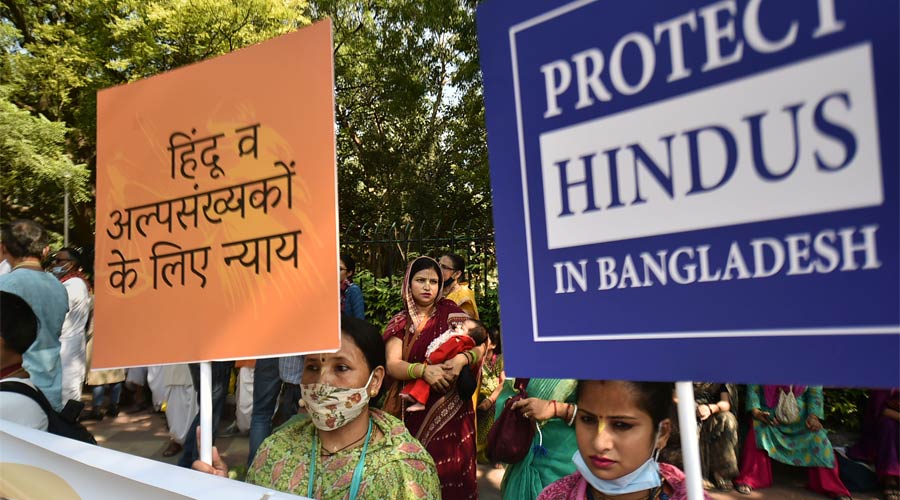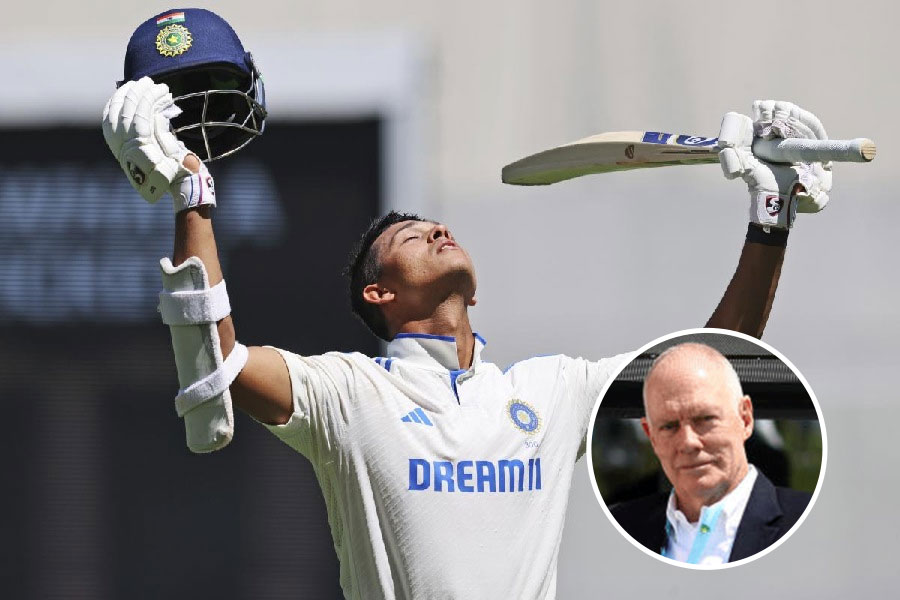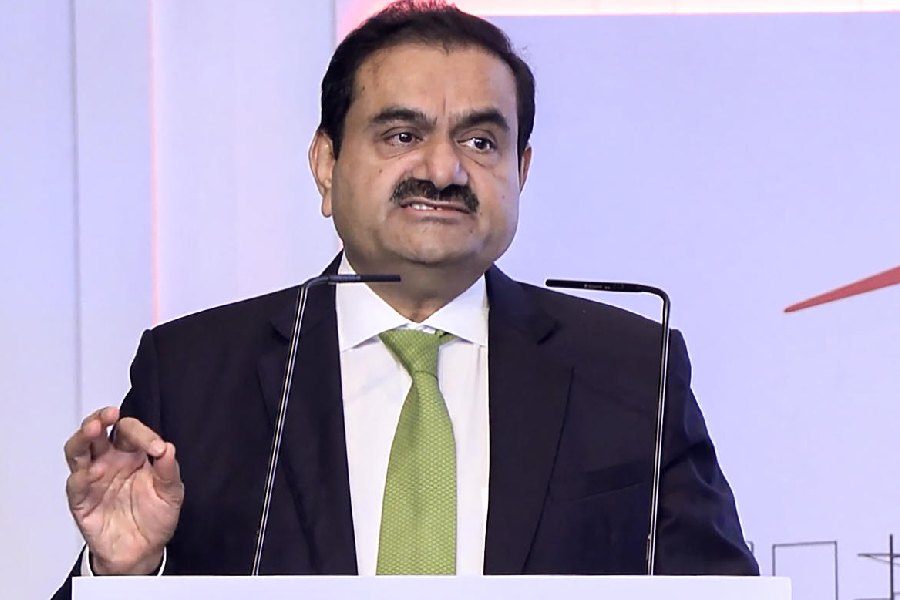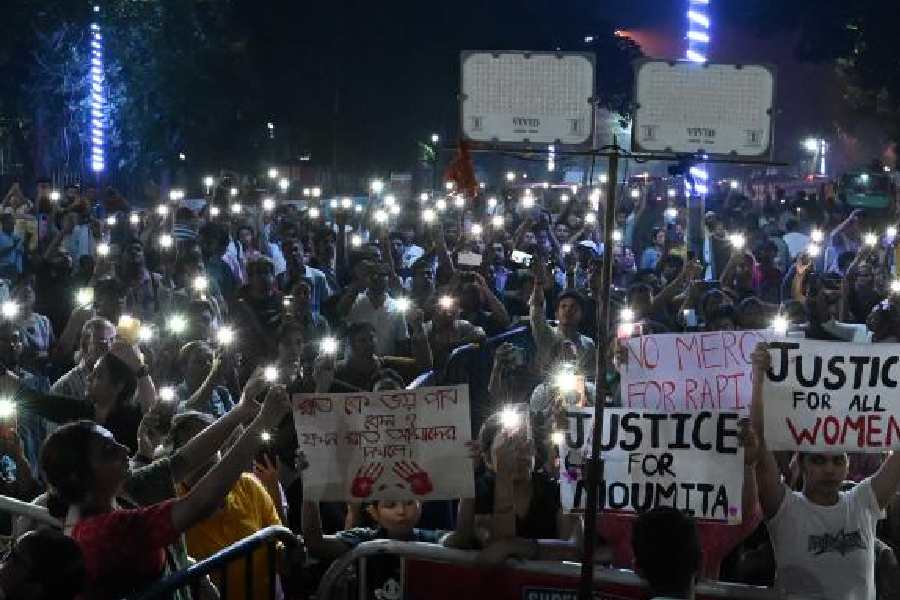The attacks on Bangladeshi Hindus and their religious institutions that began with the desecration of a Durga Puja in Comilla district, quite expectedly, provoked a strong emotional reaction in West Bengal. Although the reaction was nowhere as profound as some militant Hindu organizations and the state Bharatiya Janata Party had hoped for, it was still significant enough to warrant a mild diplomatic reaction from the ministry of external affairs in Delhi. What perhaps contributed to the emotional outbursts in West Bengal being kept under check was the evidence that — notwithstanding ugly manifestations of jihadi fervour in the districts — the Awami League government of Prime Minister Sheikh Hasina Wajed had taken strong measures to prevent Bangladesh from being engulfed in a one-sided communal conflict. Certainly, the discovery that the provocative act of placing a copy of the Quran at the feet of Hanuman was the responsibility of a local Muslim helped bring the situation under control.
It is entirely possible that the present round of attacks on Hindus which led to temples run by Iskcon and the Ramakrishna Mission being vandalized, not to mention the destruction of reportedly 400 to 500 Hindu homes, will have only a nominal effect on the political narrative in West Bengal.
There is a significant section of the population in eastern India — but particularly in West Bengal, Assam and Tripura — that comprises people whose families were uprooted from East Pakistan/Bangladesh at different points from 1947 to now. Mainly Hindus and Buddhists, they were the victims of religious persecution. They left their ancestral homes to avoid forcible conversion and maintain their traditional ways of life in India. From the 1950s to the 1970s, the refugees — particularly those from bhadralok background — had been the mainstay of the Left mobilization in Calcutta, the 24 Parganas and Nadia districts. Indeed, the communist movement in West Bengal can be said to have been nurtured by the erstwhile refugees.
That, however, was a long time ago. There is feeble evidence to suggest that a generation which grew up in the shanty refugee colonies on the periphery of Calcutta and heard countless tales of the bitter experience of Partition and its aftermath from their parents and grandfathers feels sufficiently for those Hindus who chose to stay put in Bangladesh. This relative disinterest cannot be explained by any political apathy. The refugee movement that gave the Congress governments of B.C. Roy and Prafulla Chandra Sen a torrid time with its demands for squatter rights were by no means apolitical or (to use Marxist terminology) narrowly economistic. This movement, after all, supplied the leadership of all the Left and ultra-Left parties.
Perhaps the reason can be located in the manner in which the communist parties manipulated the refugee anger. It is significant that the thrust of the refugee movement was directed at improving the living conditions of the uprooted peoples and securing them rights over the land they had occupied after coming to Independent India. The communist parties tried to breed an internationalist outlook among their supporters. But whereas this ranged from denouncing American imperialism and expressing solidarity with the struggles in Korea, Vietnam, South Africa and, of late, Palestine, there was no attempt whatsoever to ask why they had become refugees in the first place. The entire experience of being uprooted from eastern Bengal and the migration to India was sought to be masked in silence and denial. Unlike northern India where popular novels such as Tamas and Train to Pakistan played an important role in shaping consciousness, the focus in Bengal — witness the films of Ritwik Ghatak — was on the experiences and struggles in the refugee camps.
There was no pre-history to people becoming refugees. Very few people, for example, were ever to know that one of the more prominent CPI leaders of North Calcutta had been brutally gang-raped by Muslim League vigilantes while fighting for peasant rights in East Bengal. They were not to know that the father of a CPI(M) leader, who subsequently became mayor of Calcutta, had been buried alive by a vengeful mob during the Partition riots. These and other stories, particularly the tales of the horrific riots after 1950, were conveniently erased from the popular imagination. Indeed, it wasn’t until recently that the selective targeting of East Pakistan’s Hindu minority by the Pakistan army and local Razakars during the liberation struggle was formally acknowledged.
Facets of the history of the Hindu minority on the wrong side of the Radcliffe Line were no doubt unearthed during the debates that raged in the wake of the passage of the citizenship laws in 2019-20. However, even this was subsumed by the shrill and specious propaganda that the Citizenship (Amendment) Act sought to deprive Indian Muslims of citizenship rather than formalize Indian citizenship for those who fled religious persecution in the aftermath of Partition.
The argument that too much dissection of history will promote communal polarization is a theme that resonates in West Bengal. It is intimately linked to the vagaries of electoral politics that saw the Trinamul Congress win a resounding majority in the assembly elections earlier this year based on its ability to secure near-total support of the 27 per cent Muslim electorate. The fear that highlighting the precarious condition of Hindus across the border will heighten the consolidation of Hindus behind the BJP was undoubtedly behind the indifference of the state’s otherwise vocal intelligentsia and civil society organizations to the recent incidents in Bangladesh. Whereas there were spirited protests by ‘secular’ Bangladeshis against the attacks on Hindus, their compatriots in Calcutta chose to look the other way, even explaining away the attacks as similar to what Muslims experience in India. The notables in West Bengal appear to have taken their cue from Chief Minister Mamata Banerjee and her party functionaries who didn’t react to the turbulence in Bangladesh. Unlike the Narendra Modi government at the Centre, the state government didn’t even have to be mindful of geo-strategic complications.
The historical and political narratives in West Bengal centred on Hindu Bengalis suffer from an imbalance. Unless this is addressed both politically and intellectually, the collective interests of the community are calculated to be relegated to the footnotes of statecraft.










